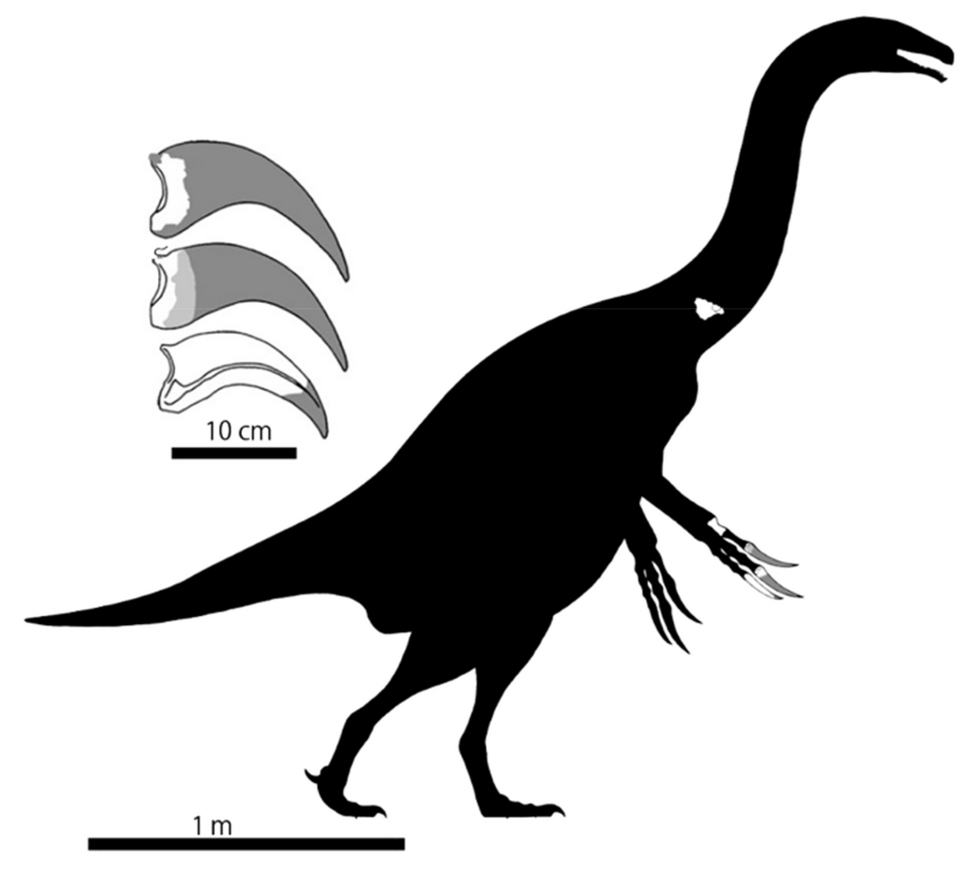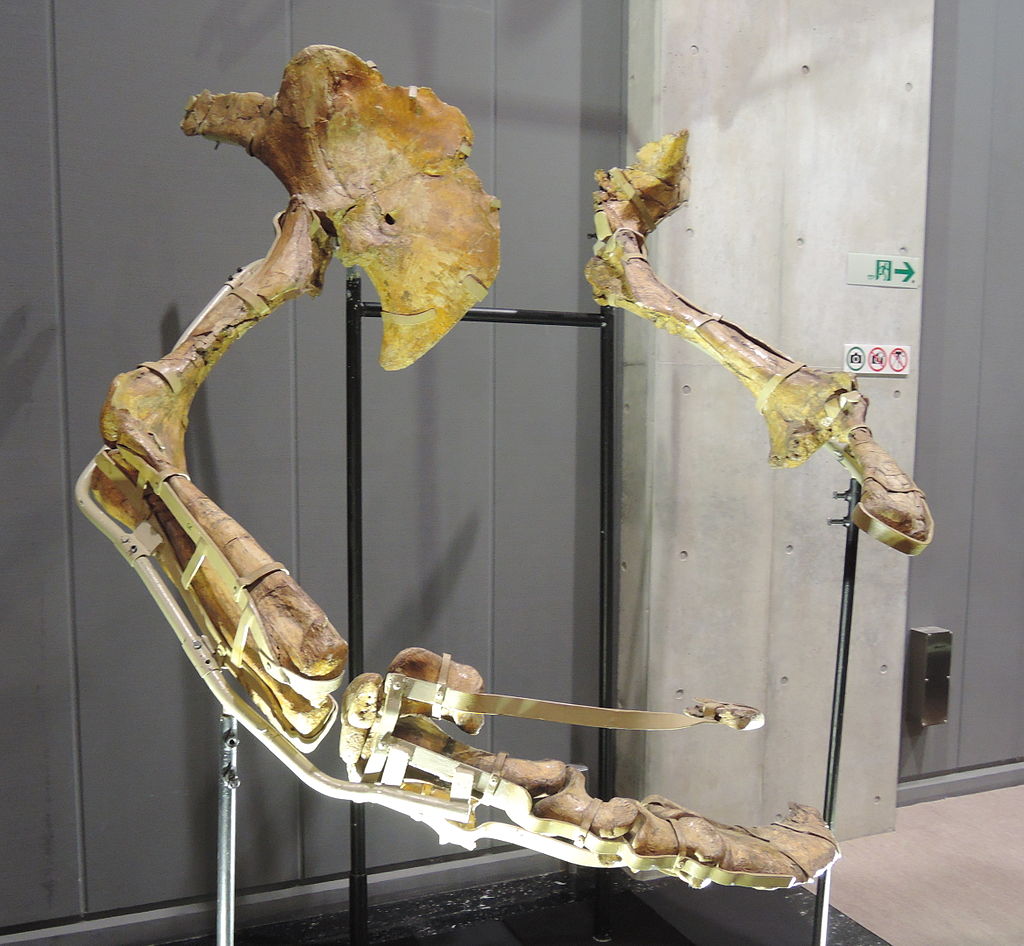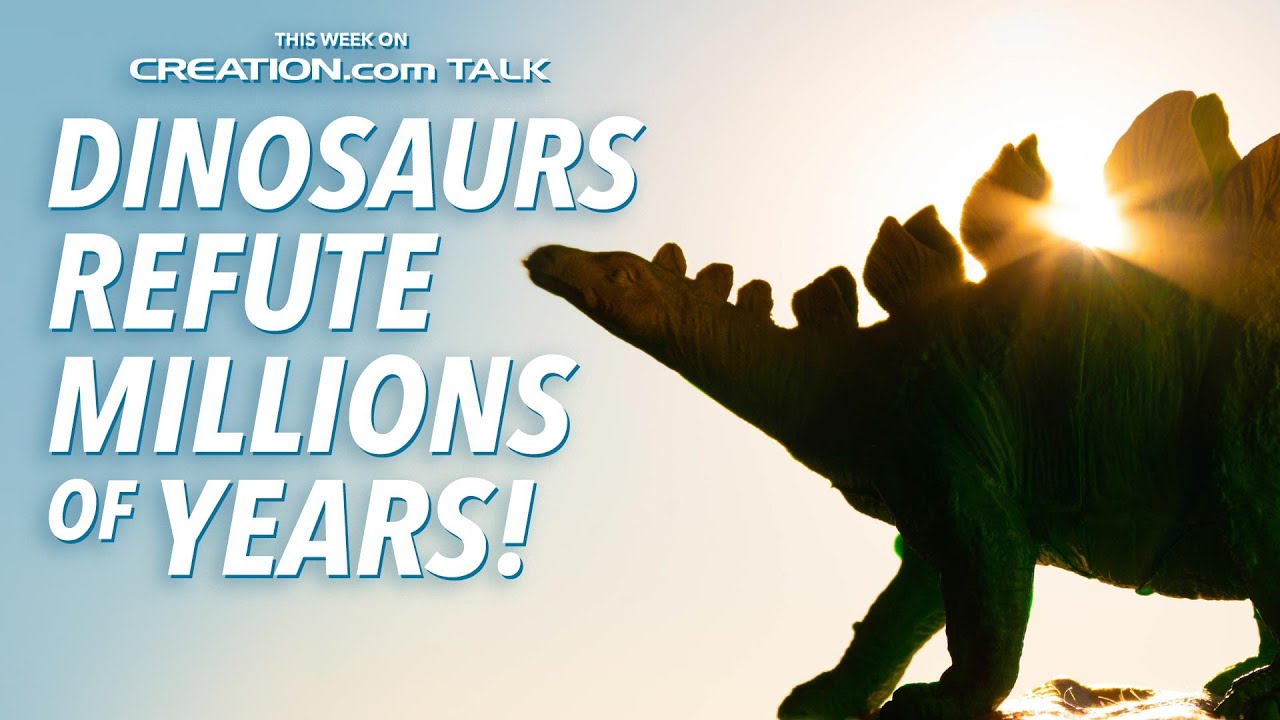‘Scissorhands’ dino ate plants

Some dinosaur remains including knife-like fingers were discovered in Nakagawa, a district in Hokkaido, Japan, in 2008.1,2 The remains were assigned to Upper Cretaceous and ‘dated’ to 82–70 million years ago.
Recently, other scientists realized that those claws were not used for cutting animal prey, but for slashing plants for food. They named the dinosaur Paralitherizinosaurus japonicus, meaning “Scythe lizard of Japan near the sea”, from Greek paralos = near the sea, therizō = cut off, reap, sauros = lizard, and Latin Japonicus =of Japan.3
From a biblical perspective, Paralitherizinosaurus was part of the created variety of the Therizinosaurid created kind, corresponding to the family Therizinosauridae or maybe an even larger grouping, Therizinosauria. The name means ‘scythe lizard’. These dinosaurs are hard to classify because of their unique appendages and huge claws. This group was formerly called ‘segnosaurs’, after the similar dinosaur Segnosaurus.
Unfortunately, there are limits to what we can know about Paralitherizinosaurus, because the remains are so fragmentary. Even the first-discovered Therizinosaurid, Therizinosaurus cheloniformis, is known from its arms and shoulder girdle. The reconstruction was based on other similar dinosaurs such as Segnosaurus, Nothronychus, and Beipiaosaurus, known from more complete skeletons. These were probably other varieties of the same created kind.

What we can learn from Paralitherizinosaurus
First, just because something has slashing claws or sharp teeth, it doesn’t mean it ate meat.4 In fact, over 10 years ago, evolutionary scientists discovered that scythe-dinosaurs or Therizinosaurids were vegetarian.5 Also, Therizinosaurids are part of the theropods, the group that includes the T. rex, Velociraptor, and Giganotosaurus, with a deserved reputation as fierce predators. However, the same researchers realized that a majority of theropods were vegetarian.6
As the Bible says, both humans and animals were created to eat plants (Genesis 1:29–30). God permitted humans to eat meat after the Flood (Genesis 9:3), but some animals became carnivorous between the Fall and the Flood.7
Second, Paralitherizinosaurus was discovered in marine sediments. Obviously, it didn’t live in the sea. But somehow it was buried with marine creatures. This is a lesson that the fossil record is not a sequence of age, but a sequence of burial. We would expect that a worldwide Flood would often wash creatures from different environments into a basin.
Third, Paralitherizinosaurus is often illustrated with downy fuzz, because of the dogma that birds evolved from theropods. But there is no evidence of any feathers or skin. Skin impressions of other large theropods, such as tyrannosaurs, allosaurs, and abelisaurs show that they had skin with bumpy scales. Conversely, similar ‘fuzz’, technical name pycnofibres, has been found in creatures that evolutionists do not think are closely related to birds and dinosaurs, such as pterosaurs.8
Notably, Jurassic World: Dominion portrayed Therizinosaurus as both feathered and predatory (see review). Thus the movie reflected the faulty evolutionary consensus on feathers, but defied the modern consensus by both creationists and evolutionists that they were vegetarian.

Conclusion
Biblical creationists should never fear new discoveries, but be happy in anticipation. So many times, they provide still more strong evidence that biblical history can be trusted.
References and notes
- Southern Methodist University (SMU), New dinosaur species used fearsome claws to graze along the coast: Scientists have described the youngest therizinosaur fossil from Japan and the first in Asia to have been found in marine sediments, smu.edu, 1 Jun 2022. Return to text.
- Nalewicki, J., Dinosaur ‘reaper’ with massive claws found in Japan, livescience.com, 10 Jun 2022. Return to text.
- Kobayashi, Y and 4 others, New therizinosaurid dinosaur from the marine Osoushinai Formation (Upper Cretaceous, Japan) provides insight for function and evolution of therizinosaur claws, Nature Science Reports 12:7207, 3 May 2022; nature.com. Return to text.
- Sarfati, J., and Cosner (Sanders), L., ‘Carnivorous’ dinosaurs had plant diet, and: More challenges to dino-to-bird dogma, creation.com/veg-dinos, 27 Jan 2011. Return to text.
- Zanno, L.E. and 4 others, A new North American therizinosaurid and the role of herbivory in ‘predatory’ dinosaur evolution, Proc. Royal Society B 76(1672):3505–3511, 15 Jul 2009. Return to text.
- Zanno, LE. and Makovicky, P.J., Herbivorous ecomorphology and specialization patterns in theropod dinosaur evolution, PNAS 108(1):232–237, 4 Jan 2011. Return to text.
- Sarfati, J., When did animals become carnivorous? creation.com/carnivory-fall, 31 Aug 2014. Return to text.
- Tay, J., Feathered pterosaurs: ruffling the feathers of dinosaur evolution, J. Creation 33(2):93–98, 2019; creation.com/feathered-pterosaurs. Return to text.






Readers’ comments
Comments are automatically closed 14 days after publication.